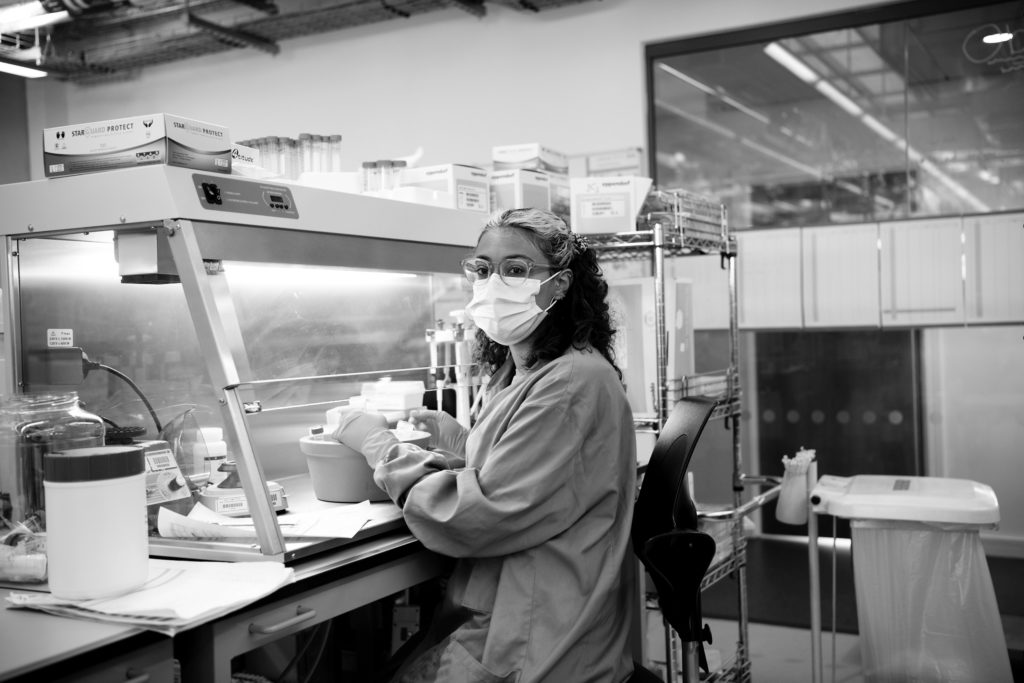A Space for Science
Various | Hinxton Hall Estate: Georgians, Jet Engines and Genes
In 1992 the Hinxton Hall estate was purchased by the global charitable foundation, Wellcome, which supports science to solve the urgent health challenges which face everyone. The Hall and the former Tube Investments Research Laboratory (TIRL), became the UK home of the Human Genome Project. Led by Sir John Sulston, a team of dedicated scientists and support staff eventually sequenced more than one third of the DNA sequence of the entire human genome and created the Wellcome Sanger Institute in the process. Agreements made during the Human Genome Project to encourage the free distribution of research data acted as a groundbreaking step for scientific research.
When TIRL took possession of the site in 1954 they discovered the Pompeiian frescos covered up by wallpaper. However, it wasn’t until the Sanger Institute moved in that the renovation of the Hall and the conservation of the Pompeiian Room began. It took nearly a year and a half for art conservator Pauline Plummer to painstakingly restore the paintings to their former glory.
Renovating the Pompeiian Room
Murals in the Pompeiian Room circa 1950
Renovating the Hall front
Renovating the Hall back
Renovating the Hall scaffolding front circa 1995
Renovating the Hall scaffolding back circa 1995
Renovating the Hall scaffolding side circa 1995
Hinxton Hall today, view from the lawn
Hinxton Hall today, front
Hinxton Hall today, back
Today the Hinxton estate is the home of the Wellcome Genome Campus and the location of the Wellcome Sanger Institute, Wellcome Connecting Science, EMBL-European Bioinformatics Institute (EMBL-EBI), Genomics England, and many others. The unique architectural features of Hinxton Hall have been recognised through its Grade II* listing by Historic England, and it continues to be used on daily basis as a conference centre and meetings venue. Adjacent to the Hall is a 300 seat auditorium where Wellcome Connecting Science’s courses and conference programme facilitates learning for over 3,500 research and healthcare professionals each year.
The early Sanger Centre years
The TIRL building in the early 1990s
The TIRL buildings and walled gardens in the early 1990s
A view of the entrance and the water tower in the early 1990s
John Sulston
Sanger Scientists from the yeast sequencing group, Christmas lunch 1994
A lab at the Sanger Centre in the early 1990s
Human Genome Project celebrations
Sequencing laboratory late 1990s
Building the Sulston Building
The BRCA2 team: the scientists behind the breast cancer gene discovery
Project Heron
The Hinxton estate has maintained its history of discovery and innovation, with research programmes led by the Wellcome Sanger Institute and EMBL-EBI providing new insights into a range of health conditions. Often working with partner organisations, the Sanger Institute has sequenced the genomes of the microorganisms which cause infectious diseases such as tuberculosis, cholera and malaria, increasing our understanding of how these diseases spread and evade drug treatments; it has revealed the genetic basis of a range of developmental disorders, providing families with a definitive clinical diagnosis; it has identified mutations that play a critical role in the development and progression of a range of cancers; and it is mapping all the different cell types in the human body to improve our knowledge of how these cells interact with each other, and influence health and disease.
In 2020, as part of a global response the Covid-19 pandemic, the Sanger Institute joined the COVID-19 Genomics UK (COG-UK) consortium to deliver large-scale and rapid whole-genome virus sequencing to local NHS centres and the UK government. As of mid-April 2021, COG-UK has sequenced more than 438,000 SARS-CoV-2 genomes, with the Sanger Institute contributing 270,000 of these. The data generated from genome sequencing provides information on viral transmission and introduction in care homes, universities, hospitals, and through international travel, enabling tracking and analysis of key variants. This data and a range of analysis tools are freely available to researchers across the world, as part of the global effort to combat the pandemic.
